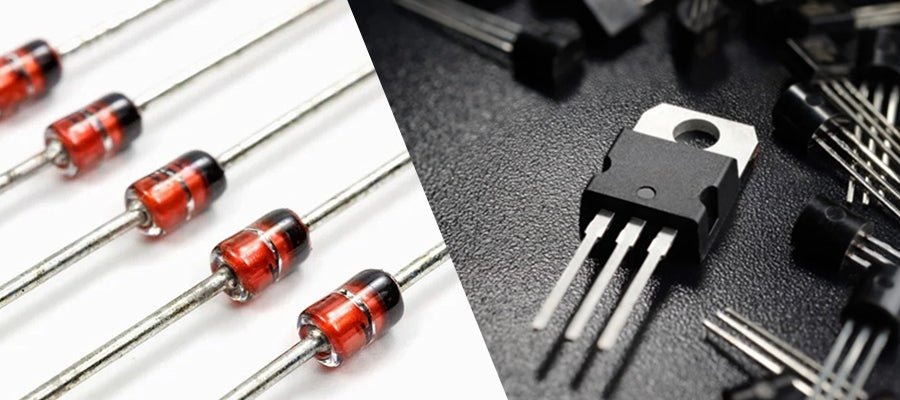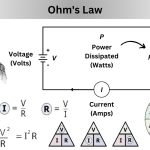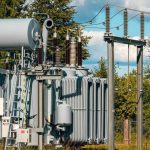Introduction
Ever wondered what makes your smartphone, computer, and TV work? Or how tiny circuits inside gadgets can switch on and off instantly? The secret lies in two small but mighty components: diodes and transistors. These unsung heroes are the foundation of modern electronics, silently powering everything from LEDs and radios to computer processors and robots. In this article, we’ll explore what diodes and transistors are, how they work, and why they truly are the MVPs of electronics! ⚡💡📱
🧠 What Is a Diode?
A diode is an electronic component that allows electricity to flow in only one direction—just like a one-way street. This simple but powerful function is essential for controlling current flow, protecting circuits, and converting AC (alternating current) to DC (direct current).
Key Characteristics of Diodes:
- 🔀 One-Way Flow: Current flows from the anode (positive) to the cathode (negative) but not the other way.
- ⚡ Forward Voltage: Diodes need a small voltage (typically 0.7V for silicon and 0.3V for germanium) to start conducting.
- 🛑 Reverse Blocking: They block current when connected in the opposite direction, protecting sensitive components.
Diode Symbol:
➡️|— Represents the one-way flow of electricity, with the arrow pointing from the anode to the cathode.
💡 Types of Diodes and Their Uses
-
Standard Diode (Silicon or Germanium):
- Basic one-way current flow, used in power supplies and rectifiers.
-
Light Emitting Diode (LED): 💡
- Emits light when current flows through it, found in displays, indicators, and lighting systems.
-
Zener Diode: 🛡️
- Allows current to flow in reverse at a specific voltage, used for voltage regulation and circuit protection.
-
Schottky Diode: ⚡
- Ultra-fast and low voltage drop, ideal for high-speed switching and power supplies.
-
Photodiode: 📸
- Converts light into electricity, used in solar panels, cameras, and light sensors.
-
Rectifier Diode: 🔋
- Converts AC to DC, essential in power adapters and chargers.
⚙️ How Does a Diode Work? (Simple and Fun!)
Imagine a diode as a one-way valve in a water pipe:
- 💧 Water (Current) flows freely in one direction.
- 🛑 If you try to push water in the opposite direction, the valve blocks it.
In electronics, when voltage is applied in the forward direction (anode to cathode), the diode acts like an open gate, allowing current to pass. But if the voltage is reversed, the diode acts like a closed gate, stopping the current from flowing backward. This ability to control current makes diodes perfect for rectification, signal processing, and protecting sensitive components.
🧩 What Is a Transistor?
A transistor is a semiconductor device that can act as an electronic switch or amplifier. Transistors are the building blocks of modern electronics, used in everything from simple circuits to advanced microprocessors.
Key Characteristics of Transistors:
- 🔁 Switching: Turns current on and off, controlling devices like LEDs, motors, and relays.
- 📢 Amplification: Boosts weak electrical signals, essential for radios, microphones, and speakers.
- 💡 Signal Control: Allows precise control of voltage and current, enabling digital logic and computing.
Transistor Symbol:
- An arrow indicates the direction of current flow through the emitter, with three terminals:
- Base (B): Controls the transistor’s operation.
- Collector (C): Receives the main current flow.
- Emitter (E): Allows current to exit the transistor.
🌱 Types of Transistors and Their Uses
-
Bipolar Junction Transistor (BJT):
- Most common type, with two main variations:
- NPN: Current flows from the collector to the emitter when voltage is applied to the base.
- PNP: Current flows from the emitter to the collector when voltage is applied to the base.
- Most common type, with two main variations:
-
Field-Effect Transistor (FET):
- Controlled by voltage rather than current, ideal for low-power applications.
-
MOSFET (Metal-Oxide-Semiconductor FET):
- Widely used in microprocessors and power electronics due to its high efficiency and fast switching.
-
Darlington Transistor:
- A pair of BJTs combined to provide high current gain, used in power amplifiers and motor controls.
-
Phototransistor:
- Activated by light, used in sensors and optical communication systems.
🧠 How Does a Transistor Work? (Simple and Fun!)
Think of a transistor as an electric faucet with a small control knob:
- 💧 Water (Current) flows from the collector to the emitter.
- 🛑 Knob (Base) controls how much water flows.
- 🌀 A tiny amount of current at the base can control a large flow of current through the collector, allowing the transistor to act as an amplifier or switch.
Example:
- In an amplifier, a weak audio signal at the base is boosted into a loudspeaker, making the music louder.
- In a switch, a tiny control signal at the base turns on a large current, powering a motor or light bulb.
⚡ How Diodes and Transistors Shape Electronics
🔋 1. Rectifiers:
- Diodes convert AC from wall outlets into DC used by electronic devices.
💡 2. LED Lighting:
- Diodes light up when electricity flows through them, creating energy-efficient lighting.
📡 3. Radios and TVs:
- Transistors amplify weak radio and TV signals, enabling clear sound and picture.
📱 4. Computers and Smartphones:
- Billions of tiny transistors form the microprocessors that power modern devices.
🚗 5. Electric Vehicles (EVs):
- Transistors control electric motors, battery charging, and energy management.
🏡 6. Home Automation:
- Transistors switch lights, appliances, and smart devices on and off.
🧩 Comparison: Diodes vs. Transistors
| Feature | Diode ⚡ | Transistor 💡 |
|---|---|---|
| Function | Allows current in one direction | Acts as a switch or amplifier |
| Terminals | Two (Anode, Cathode) | Three (Base, Collector, Emitter) |
| Conductivity | Conducts when forward-biased | Controlled by voltage or current |
| Signal Amplification | No | Yes |
| Switching Speed | Fast (but not as fast as transistors) | Ultra-fast (essential in microchips) |
| Main Uses | Rectification, voltage regulation | Switching, amplification, logic gates |
⚡ Real-World Examples of Diodes and Transistors
📱 Smartphones and Computers:
- Billions of transistors power processors, memory chips, and touchscreens.
- LEDs provide display backlighting and indicator lights.
🚗 Electric Vehicles:
- Power transistors control motors, inverters, and charging systems.
- Diodes protect circuits from voltage spikes and reverse currents.
📡 Communication Systems:
- Transistors amplify radio signals, enabling wireless communication.
- Diodes convert high-frequency signals into usable audio and data.
🏡 Home Appliances:
- Diodes in power supplies convert AC to DC, powering TVs, refrigerators, and microwaves.
- Transistors control motors, fans, and temperature sensors.
🛑 Why Diodes and Transistors Are So Important
Without diodes and transistors, modern electronics would not exist. These components enable devices to control, amplify, and switch electrical signals with incredible speed and efficiency. From lighting up an LED to running a supercomputer, their impact is everywhere, making them the MVPs of Electronics!
🧪 DIY Project: Build a Simple Transistor Switch
Components:
- 9V Battery
- LED
- 330Ω Resistor
- NPN Transistor (e.g., BC547)
- Push Button
- Breadboard and Jumper Wires
Steps:
- Connect the LED and resistor in series from the positive terminal of the battery to the transistor’s collector.
- Connect the transistor’s emitter to the negative terminal of the battery.
- Connect the push button between the positive terminal and the transistor’s base.
- When you press the button, the LED lights up, demonstrating the transistor’s switching function! 💡😊
Why It Works:
- The small current from the button activates the transistor’s base, allowing a larger current to flow from the collector to the emitter, lighting up the LED.
🔮 The Future of Diodes and Transistors
As technology advances, diodes and transistors are becoming faster, smaller, and more energy-efficient. The rise of nanotechnology and quantum computing is pushing these components to their limits, enabling devices that are more powerful and compact than ever before. From AI-driven supercomputers to self-driving cars and wearable electronics, the future is powered by these tiny but mighty components! 🚀💡📱
📝 Conclusion
Diodes and transistors may be small, but their impact is enormous. Diodes control the flow of electricity, protecting circuits and powering LEDs, while transistors act as switches and amplifiers, forming the backbone of all modern electronics. Together, they enable the technology that powers our lives—from smartphones and computers to electric cars and space exploration. So next time you use your favorite gadget, remember the real MVPs behind the magic: Diodes and Transistors! ⚡💡😊


